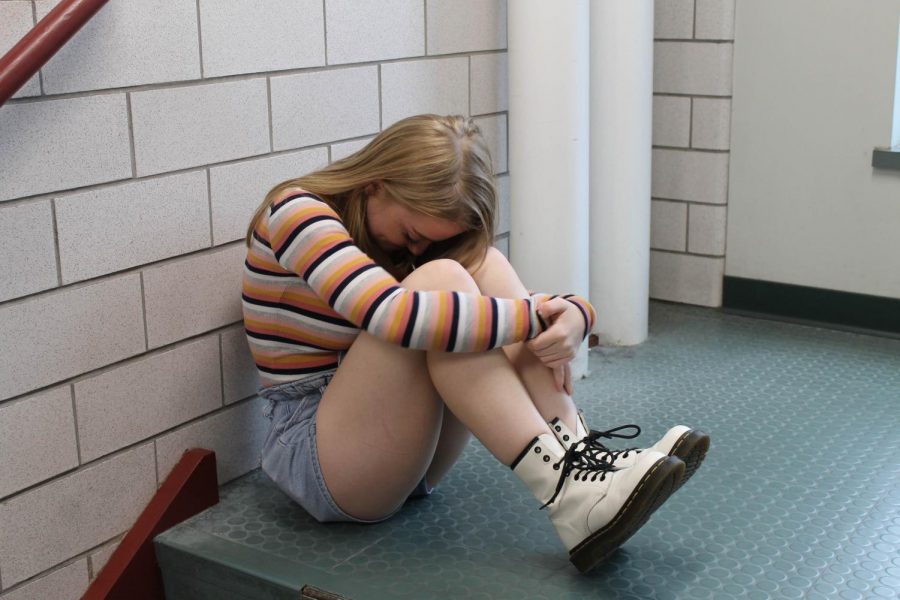The Struggles of a Student, and How the School Can Help
October 2, 2019
Mental health can never be discussed enough. Whether you are a straight-A student playing 3 sports and in a number of after-school programs, or someone just struggling to stay above a failing grade, stress and depression can affect any type of person. And in high school, there are a number of factors that could negatively impact a student’s well-being, including grades, group work with uncooperative peers, or typical friend drama. It is often just accepted that this is simply the way it is: high school will be the worst years of your life, you will hit your lowest points and there is NOTHING you can do about it. At least, that’s what we are made to think.
It is important to understand the biggest problems students with mental illnesses encounter in high school. Everyone has a different story, but a common opinion is that LHS, like many other high schools, could be doing more to accommodate students suffering extreme levels of stress, anxiety, or depression. A number of students from all grades were asked to elaborate on their experience, and several of the responses (kept anonymous for privacy) warranted attention:
“I feel like teachers belittle anxiety a bit because they probably think a “kid’s” life is significantly simpler and more worry free than an adult’s.”
“I had told them I was depressed and they met with me twice and never called me down to check up on me when I stopped going.”
“I had a breakdown because a bunch of projects were due at the same time and nobody cared.”
“In general, having a more close-minded culture in the school and a lack of education on mental health.”
These issues obviously can’t be approached and fixed overnight. Not all teachers are unsympathetic and dismissive, and it can be difficult for them to spread out assignments apart from other subjects when they are trying to fit in a certain amount of lessons per term. However, these concerns are completely valid and deserve to be addressed. These students were additionally asked what they thought could be done to make LHS a more mental-health conscious environment and to provide better care and support for students who need help. Here’s what they had to say:
“Punish bullies and people who use derogatory terms, and teach more about mental health and diversity.”
“Give each student a chance to talk about how they’re doing mentally by calling them down to talk.”
“Don’t make students feel guilty for having mental health issues when they want to discuss it.”
“Study up on methods to better care for students with mental health issues and apply their learnings to the school policies and curriculum.”
It is likely that many of these issues stem from a lack of understanding or awareness of these issues. A beneficial suggestion could be giving the faculty a course before school starts explaining the horrifying statistics of mental illness in high schoolers and activities that may help them feel better supported. Teachers must place themselves in the shoes of the students to truly get a feel of what would be the most helpful. In the classroom, simple acts such as breathing exercises at the beginning of class or a check-in for each student could at least be a start. Physical health is deemed highly important in the high school, requiring each student to be vaccinated, tested for concussions and attending physical therapy if a sports injury occurs. Just as the body needs a break after strenuous activity, the mind is the same way.
Students are not the only ones who wish to improve the support at LHS. Mr. Hokanson, the social worker at the high school, wants to normalize opening up about mental illness. He stopped to chat with me while he and a few students put encouraging sticky notes on desks and lockers. He believes that those little things can really change someone’s day for the better.
“I think the best thing that schools can do is to create more awareness about what mental illness is the effects it can have on people, and that we need to be accepting of all people, and create outlets for kids who are struggling,” Hokanson says. “End the stigma, talk about it.”
So why is this important? Adults may argue that after high school, this feeling will pass. Once you graduate, the nightmare will be over, and you can be happy…right? However, after high school, most students will simply move on to college and experience many of the same feelings all over again. In a study for the American College Health Association in 2017, 60 percent of students interviewed reported experiencing intense anxiety, and 40 percent experience severe degrees of depression; Overall, 50% of them rated their mental health in college as overall quite poor. And this only accounts for those who move on to college–based on statistics from the National Alliance on Mental Illness, high school students with depression are more than twice as likely to drop out of school.
The solutions to these problems will not be solved overnight, but the conversation of mental health needs to be opened up at Ludlow High School. No one should feel alone in their everyday struggles, especially when so many others feel the same way. These feelings are nothing to be ashamed of, and talking about it is the first step.


